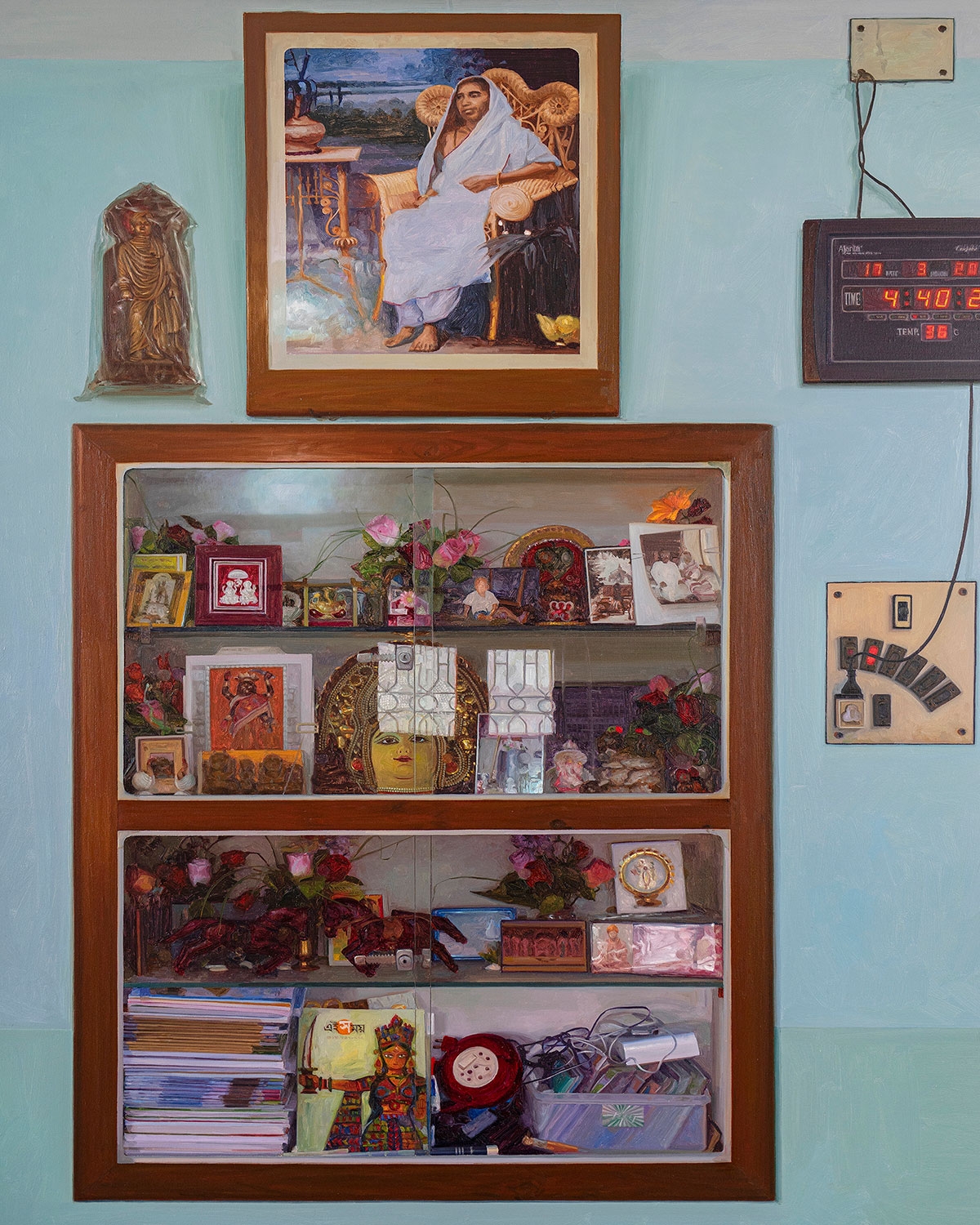
Image Credit - Asia Society
Abir Karmakar, a Spotlight artist is known for using mundane items that speak a unique story. The artist's work as a painter is built on long years of practice. His journey as an artist has been a long and arduous one. As a child of migrant parents from Bangladesh, he began by making painstaking copies of illustrated calendars, Marvel Comics and socialist realist paintings from the catalogue of the Tretyakov Gallery in Moscow. Years later, when he began studying at the Government College of Art and Craft in Kolkata, he bought books on Western art. One such, a book about Andy Warhol, created a deep and lasting impact on him. Today, while his works foray into 3D, he specializes in what he describes as site specific paintings - one of them being a large-scale commission for the Kochi Muziris Biennale in 2016.
The interiors in his works and others from subsequent installations, feature a particular middle-class Indian home from a certain era. These are now, perhaps, being superseded in the big cities by new apartment buildings with their globalised aesthetic exteriors.
The artist received a BA in visual art from Rabindra Bharati University, Kolkata, in 2001 and a MFA from Maharaja Sayajirao University of Baroda, Vadodara, in 2003. Working in Vadodara, India, Karmakar's photorealist paintings depict identity, memory, and place.
The artist has carefully researched and meticulously rendered depictions of domestic items that highlight social and temporal idiosyncrasies of modern India and its legacy of colonization by the British Raj.
The six canvases that compose 'Passage', for example, were created in response to the living- and dining-rooms of a nineteenth-century residence on Governor's Island in New York City. Known for his specificity and tender attention to detailing, Karmakar shows empathy and understanding of the universal power of a warm and safe home and the possessions it contains.
The artist also excels at mimesis. The true content of 'Everyday', for instance, is not the painting's illusionism but rather its staking and receipt of time. 'Surface 7, 2021', a gridded rectangle of a deteriorating indigo wall, painstakingly describes a process of peels, cracks, and stains, while its interest fixes firmly to what remains through such passage.